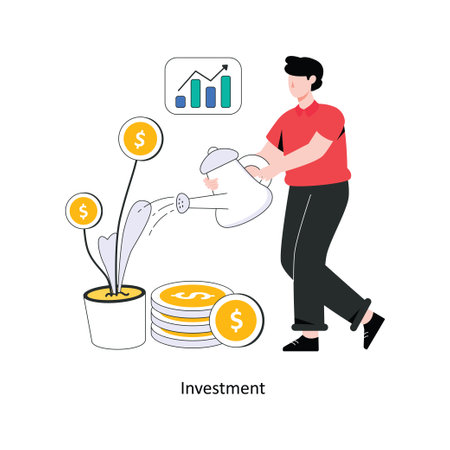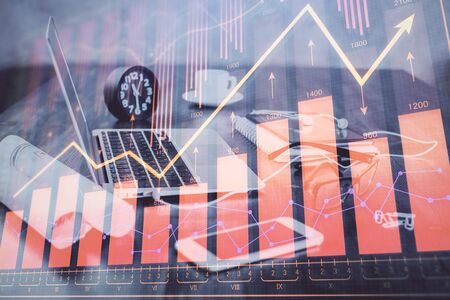1. Introduction to NFTs and the Art Market
Non-fungible tokens (NFTs) have revolutionized the art investment market, offering a new way for artists and collectors to buy, sell, and trade digital assets. Unlike traditional art forms, NFTs exist on blockchain technology, ensuring authenticity, scarcity, and verifiable ownership. This innovation has disrupted the traditional art industry by introducing a decentralized and transparent marketplace.
What Are NFTs?
NFTs are unique digital assets that represent ownership of a specific item or piece of content, such as artwork, music, or virtual real estate. Unlike cryptocurrencies like Bitcoin or Ethereum, which are interchangeable (fungible), NFTs have distinct properties that make each one unique.
Key Characteristics of NFTs
- Uniqueness: Each NFT is one-of-a-kind or part of a limited edition.
- Indivisibility: NFTs cannot be split into smaller units like cryptocurrencies.
- Ownership & Provenance: The blockchain ledger records every transaction, ensuring transparency.
- Permanence: Digital artworks tied to NFTs remain accessible indefinitely.
The Emergence of NFTs in the Art Market
NFTs gained mainstream attention when high-profile sales, such as Beeple’s “$69 million” auction at Christie’s in 2021, demonstrated their potential as valuable investment assets. This event marked a turning point in how digital art is perceived and collected. Since then, artists and investors have leveraged NFTs to monetize digital creations while maintaining authenticity and scarcity.
Comparison: Traditional Art vs. NFT Art Investment
| Aspect | Traditional Art | NFT Art |
|---|---|---|
| Ownership Verification | Physical certificates & expert authentication | Blockchain-based proof of ownership |
| Market Accessibility | Largely restricted to galleries & auction houses | Global digital marketplace available 24/7 |
| Liquidity | Selling can take time due to intermediaries | Easier resale via NFT marketplaces |
| Permanence | Physical degradation over time | Permanently stored on blockchain (if properly maintained) |
| Diversification Opportunities | Mainly limited to physical artworks | Diverse range including digital art, collectibles, virtual assets |
The Disruptive Impact of NFTs on Art Investment
The rise of NFTs has introduced new opportunities and challenges for investors:
(1) Increased Accessibility for Artists and Collectors
NFTs remove traditional barriers to entry in the art world. Artists can sell directly to collectors without relying on galleries or auction houses, while collectors from anywhere in the world can invest in digital art with ease.
(2) Democratization of Art Ownership
NFTs enable fractional ownership, allowing multiple investors to own shares in high-value artworks. This makes art investment more inclusive compared to traditional models where only wealthy collectors could participate.
(3) Volatility and Speculation Risks
The NFT market is highly volatile, with prices fluctuating based on trends and demand. While some investors have seen significant returns, others have faced losses due to market speculation.
(1) Future Potential of NFT Art Investments
NFTs continue to evolve as more industries explore blockchain-based ownership models. As regulations develop and platforms mature, the long-term viability of NFT art investments will become clearer.
(2) Challenges That Need Resolution
Inefficiencies such as environmental concerns related to blockchain energy consumption and copyright disputes still need solutions for wider adoption in mainstream markets.
2. How NFTs Are Changing Art Investment
Non-fungible tokens (NFTs) are transforming the way people invest in art by introducing digital ownership, provenance tracking, and fractional ownership. These innovations challenge traditional art investment models and open new opportunities for collectors and investors.
Understanding Digital Ownership
NFTs provide verifiable digital ownership of artwork through blockchain technology. Unlike traditional art, where physical possession determines ownership, NFTs allow collectors to own unique digital assets with proof of authenticity.
Key Benefits of Digital Ownership
- Authenticity: Each NFT is unique and cannot be duplicated, ensuring originality.
- Security: Blockchain technology prevents forgery and unauthorized alterations.
- Liquidity: Digital assets can be easily bought, sold, or traded on various NFT marketplaces.
Provenance Tracking with Blockchain
One of the biggest challenges in traditional art investment is verifying an artwork’s history and authenticity. NFTs solve this issue by providing a transparent and immutable record of ownership on the blockchain.
How Provenance Tracking Works
| Traditional Art | NFT-Based Art |
|---|---|
| Requires certificates of authenticity | Ownership recorded on blockchain |
| Risk of forgery or lost records | Permanently stored transaction history |
| Difficult to verify previous owners | Easily traceable ownership lineage |
The Rise of Fractional Ownership
NFTs make it possible for multiple investors to own a fraction of an artwork, lowering the barrier to entry for high-value art investments.
(1) Increased Accessibility
Investors who may not afford an entire piece can purchase shares in an NFT artwork, allowing more people to participate in the art market.
(2) Enhanced Liquidity
NFT fractions can be traded on secondary markets, enabling investors to buy or sell their shares without waiting for a full sale of the artwork.
(3) Democratization of Art Investment
This model shifts art investment from being exclusive to wealthy collectors to a more inclusive market where anyone can invest.

3. Market Trends and Notable Sales
Key Trends in the NFT Art Market
The NFT art market has experienced rapid growth and transformation over the past few years. Several trends have emerged that shape how collectors, investors, and artists engage with digital art.
(1) Increased Institutional Interest
Traditional auction houses like Sotheby’s and Christie’s have embraced NFTs, signaling broader acceptance of digital assets in the art world. Their involvement has added legitimacy to NFT art as a viable investment.
(2) Expansion of Utility Beyond Art
NFTs are evolving beyond static images, incorporating smart contracts that offer royalties to artists on secondary sales. Additionally, some NFTs provide access to exclusive events, memberships, or real-world assets.
(3) Growth of On-Chain Provenance
Blockchain technology ensures transparency and authenticity, allowing buyers to verify ownership history easily. This has helped reduce fraud and build trust within the NFT art market.
Record-Breaking NFT Art Sales
Several high-profile NFT sales have garnered global attention and solidified digital art as a serious asset class. Below are some of the most notable transactions:
| Artwork | Artist | Sale Price | Auction House/Platform |
|---|---|---|---|
| Everydays: The First 5000 Days | Beeple | $69.3 million | Christie’s |
| CryptoPunk #5822 | Larva Labs | $23.7 million | OpenSea |
| Human One | Beeple | $28.9 million | Christie’s |
| The Merge | Pak | $91.8 million | Nifty Gateway |
| Right-click and Save As Guy | XCopy | $7 million | SuperRare |
Impact on Perception of Digital Art as an Asset Class
The surge in NFT art sales has reshaped how investors perceive digital art. What was once considered a niche market is now recognized as a legitimate asset class with potential for appreciation.
(1) Mainstream Adoption by Collectors and Investors
The involvement of high-net-worth individuals and institutions has driven demand for rare NFTs, reinforcing their value as investment-grade assets.
(2) Volatility and Speculation Risks
Despite major successes, the NFT market remains volatile. Prices can fluctuate significantly based on trends, hype cycles, and overall cryptocurrency market conditions.
(3) Long-Term Value Considerations
Some critics argue that certain NFT artworks may not retain long-term value without continued innovation or cultural relevance. However, blue-chip NFTs from established artists continue to hold strong resale potential.
4. Risks and Challenges of NFT Art Investment
Investing in NFT art presents exciting opportunities, but it also comes with significant risks and challenges. Understanding these potential pitfalls can help investors make more informed decisions.
Volatility in NFT Art Market
The NFT market is highly volatile, with prices fluctuating dramatically over short periods. Unlike traditional art markets, where values tend to appreciate steadily, NFT prices can skyrocket overnight and crash just as quickly.
(1) Price Fluctuations
NFT values are influenced by hype, celebrity endorsements, and market trends. A once-popular piece may lose demand rapidly, leading to substantial losses for investors.
(2) Speculative Nature
Many NFT investments are driven by speculation rather than intrinsic value. This makes the market unpredictable and prone to bubbles.
Legal Uncertainties
The legal framework surrounding NFTs is still evolving, creating uncertainties that could impact investors.
(1) Regulatory Issues
Governments worldwide are working on regulations for digital assets, and changes in policies could affect the value and legitimacy of NFT investments.
(2) Ownership Disputes
NFT ownership does not always guarantee full rights to an artwork. Some artists retain copyrights, leading to confusion about how an investor can use their purchased asset.
Copyright and Intellectual Property Concerns
NFTs have raised numerous copyright issues, as anyone can mint digital artwork without verifying its originality or rightful ownership.
| Issue | Description |
|---|---|
| Unauthorized Minting | Some individuals create NFTs from artworks they do not own, leading to copyright infringement. |
| Lack of Verification | No standardized process exists to verify whether an artist has authorized an NFT sale. |
| Piracy & Duplication | An NFT does not prevent others from copying or distributing a digital artwork freely. |
Environmental Concerns
The environmental impact of NFTs has been a major criticism due to the high energy consumption associated with blockchain transactions.
(1) Energy-Intensive Blockchain Networks
NFTs often rely on Ethereum, which uses proof-of-work (PoW), consuming vast amounts of electricity for transactions and minting.
(2) Carbon Footprint
The carbon footprint of some NFT sales equals the energy usage of an entire household for months. While new eco-friendly blockchain solutions are emerging, the issue remains a challenge for sustainable investing.
5. The Future of NFTs in the Art Market
Technological Advancements Shaping NFT Art
The future of NFTs in the art investment market largely depends on ongoing technological innovations. As blockchain technology evolves, we can expect improvements in scalability, transaction speeds, and energy efficiency. These advancements will make NFTs more accessible to both artists and investors.
(1) Layer 2 Solutions
Layer 2 solutions, such as Polygon and Optimistic Rollups, aim to reduce gas fees and improve transaction efficiency, making NFT trading more cost-effective.
(2) Interoperability Between Blockchains
As cross-chain compatibility improves, investors will be able to trade NFTs across different blockchain networks, increasing liquidity and flexibility.
(3) Smart Contract Enhancements
New smart contract functionalities may allow for dynamic pricing models, fractional ownership, and automated royalties, further enhancing the value proposition of NFT investments.
Evolving Regulations and Their Impact
The regulatory landscape surrounding NFTs is still developing. Governments and financial institutions are working towards establishing clearer guidelines to protect investors while fostering innovation.
(1) Anti-Money Laundering (AML) Compliance
Stronger AML regulations may require NFT platforms to implement Know Your Customer (KYC) protocols, ensuring safer transactions.
(2) Taxation Policies
NFTs are increasingly being recognized as taxable assets. Investors should stay informed about capital gains tax implications when buying or selling digital art.
(3) Intellectual Property Rights
Legal frameworks around copyright and ownership verification will continue to evolve, providing more security for both creators and buyers.
Potential Challenges and Opportunities
The NFT art market faces several challenges but also offers exciting opportunities. Below is a comparison of key factors:
| Challenges | Opportunities |
|---|---|
| Market volatility leading to price fluctuations | Diversification of investment portfolios with digital assets |
| Lack of standardization in valuation methods | Growth of NFT marketplaces providing better transparency |
| Skepticism regarding long-term value retention | Mainstream adoption increasing credibility and demand |
The future of NFTs in the art market will depend on how these challenges are addressed while leveraging new opportunities for growth.


